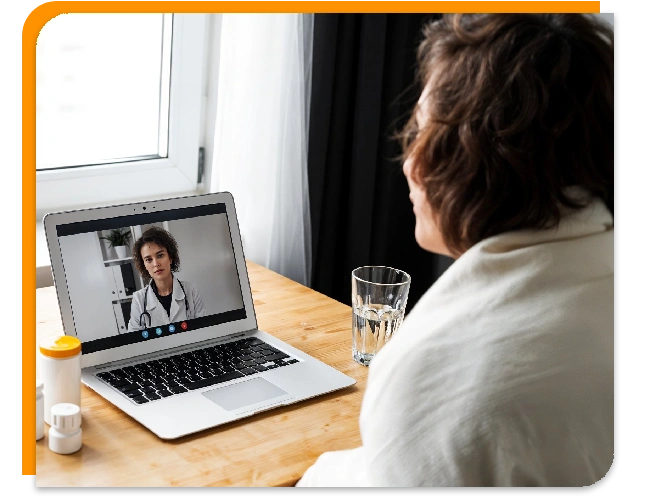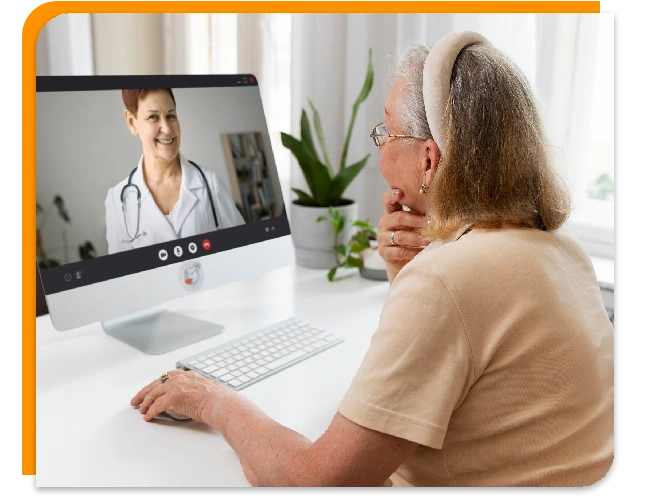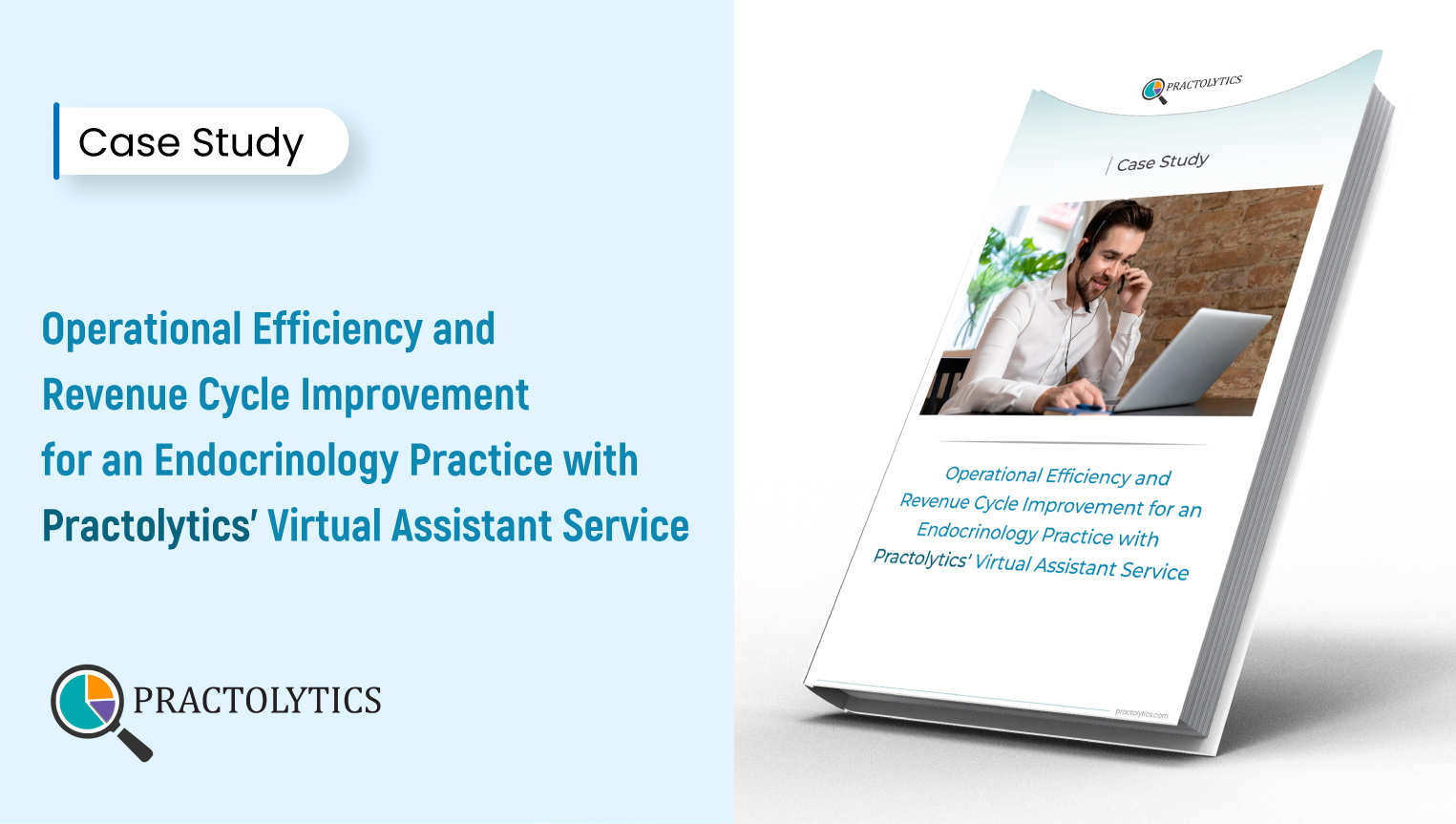Virtual Telehealth Coordination Services
Virtual Telehealth Coordination Services provide remote administrative support for your telemedicine program. In practice, this means a dedicated team (often virtual medical assistants) handles the logistics of telehealth visits – from appointment booking to patient reminders, insurance checks, and follow-up scheduling.
By offloading these tasks, clinicians can focus on care. In today’s healthcare landscape, such coordination is crucial: telehealth has become routine for many patients and clinics, and managing its details without support can slow your practice.
Practolytics’ Virtual Telehealth Coordination ensures every video visit runs smoothly, with trained assistants booking appointments, verifying coverage, and engaging patients so nothing falls through the cracks.
What Are Virtual Telehealth Coordination Services?
Telehealth coordination services act as the “glue” that holds virtual care together. In other words, they are specialized administrative teams (often remote) devoted to managing everything around a telehealth visit.
These coordinators work closely with your practice: they schedule and confirm video visits, send patients instructions on how to connect, remind them of upcoming appointments, and troubleshoot any technical issues. They also handle the paperwork – verifying patient insurance eligibility before the visit and pre-authorising services as needed.
Telehealth coordination is essentially like having a skilled front desk or clinic manager dedicated to your virtual visits. In practice, that means fewer missed calls and unanswered emails. For example, Carenet Health highlights that, post-pandemic, many patients prefer providers offering telehealth. So, if you plan to keep or grow your virtual practice, you need back-end support to deliver it seamlessly.
Virtual coordinators become the friendly point of contact, preparing patients for telehealth and answering their questions. This role goes beyond a simple phone scheduler: coordinators may monitor the video appointment to resolve issues in real time, and afterwards, they check in with patients about follow-ups.
Key Components of Telehealth Coordination
Virtual Telehealth Coordination covers several core tasks that keep telemedicine running efficiently. These include:
Coordinators book and manage telehealth calendars to fill your schedule and minimise gaps. They reach out to patients to set up video visits and adjust schedules as needed. Proactive scheduling significantly reduces last-minute no-shows. For example, studies show dedicated coordinators often call patients multiple times (or mix calls with automated reminders) to confirm appointments. This strategy has cut missed visits dramatically – one report found telehealth no-show rates dropped by more than half when coordinators engaged patients with personal reminders. Practolytics’ virtual assistants work the same way: they automate invitations and reminders and follow up to ensure your telehealth slots stay full.
Coordinators keep patients informed and confident about their virtual visits. They send easy-to-understand instructions for joining video calls and answering any pre-visit questions. Clear communication fosters engagement: positive, consistent outreach “minimizes no-shows” because patients feel prepared and valued. For example, some clinics found that coordinators who welcome new telehealth patients with phone calls or emails can reduce confusion and anxiety about using the technology. Practolytics’ team can call or message patients in advance, explain how to use the telehealth platform, and even provide support during the call if needed. By keeping the conversation warm and personal, we help patients show up on time and stay engaged in their care.
Before the visit, coordinators double-check each patient’s insurance coverage and eligibility. This upfront verification is critical: it “raises the probability of getting claims approved the first time”. In other words, verifying benefits in advance catches missing information (expired policies, wrong plan details, etc.) and prevents costly claim denials down the line. Practolytics’ assistants perform these checks automatically. They use secure tools to confirm every patient’s plan and copay before the appointment. By doing this, the billing process goes much more smoothly, and patients aren’t hit with unexpected charges later. This saves time for your staff and ensures reimbursements arrive promptly.
After the telehealth visit, coordinators arrange the next steps so patients don’t get lost. They schedule any recommended follow-up appointments, handle prescription refill requests, and make sure the care plan is on track. In essence, they close the loop on treatment plans. For example, if a patient needs a follow-up tele-checkup or lab test, the coordinator will reach out to schedule that visit. This continuity of care boosts outcomes because issues are caught early. Practolytics’ team can even call patients after the visit to see how they’re doing and answer any leftover questions. The result is smoother patient journeys and higher satisfaction since nothing slips through the cracks.
Each of these components is carried out with healthcare expertise and HIPAA-compliant tools. Our coordinators are fully trained in using your EMR and scheduling software, and they work under strict privacy standards. In short, Virtual Telehealth Coordination Services handles the nuts and bolts of telemedicine, freeing your practice to focus on what matters most.
Why Telehealth Coordination Matters Today

Telehealth isn’t a fad – it’s part of modern healthcare. By 2022, nearly 87% of hospitals were offering telehealth services, and thousands of primary care and specialty practices now connect with patients by video. Even as pandemic restrictions ease, demand remains high: recent data show over 12.6% of Medicare beneficiaries received a telehealth service in late 2023, far above pre-COVID levels. Patients across the board appreciate the convenience of care from home, and many have come to expect virtual options.
At the same time, healthcare systems face growing challenges. The U.S. may have up to 86,000 fewer physicians by 2036 if nothing changes, making every clinical hour valuable. Telehealth helps close these gaps by letting doctors extend their reach remotely, but it also adds new workflow tasks. If no one focuses on telehealth logistics, virtual visits can quickly bog down a practice. One evaluation found that without dedicated support, staff become frustrated: “If we didn’t have a coordinator to monitor all the complex moving parts, staff and providers would not support [telehealth] due to inherent frustrations”. In other words, to sustain telehealth as a practical service, you need someone to keep the engine oiled.
Challenges Without Telehealth Coordination
Practices without dedicated telehealth support often struggle with common pain points. For instance, missed appointments and no-shows become costly. In general, up to 30% of scheduled visits go unattended—each no-show not only means lost revenue but also delays patient care. Without someone proactively confirming video visits, these rates can stay high. Staff may resort to chasing patients reactively (often with limited success) instead of preventing gaps from the start.
On the administrative side, the burden quickly adds up. Studies show clinicians already spend long hours on paperwork and EHR entry, often at home after hours. Adding telehealth coordination tasks on top of that can easily push them over the edge. Handling appointment calls, troubleshooting tech problems, and chasing insurance coverage draws time away from patient care – and contribute to burnout. An AMA report noted that the least fulfilling and most time-consuming tasks for doctors are administrative, directly leading to stress and “pyjama time” documentation.
Insurance issues are another headache: if no one verifies eligibility ahead of time, denials pile up. Practolytics’ referral centre notes that most claim rejections happen right at the front desk from simple errors.
How Practolytics Solves These Problems
Practolytics’ Virtual Telehealth Coordination Services are designed to tackle all the issues above. Our team of Virtual Medical Assistants (VMAs) becomes an extension of your office, explicitly trained in telehealth workflows. Here’s how we help:
Why Choose Practolytics?
If telehealth has become a bigger part of your practice (or if you’re considering it), now is the time to strengthen your support team. Practolytics’ Virtual Telehealth Coordination Services are designed to plug directly into clinics so you can save time and reduce stress immediately. We encourage you to take advantage of our free consultation and demo. You’ll see firsthand how a virtual assistant can organise your telehealth schedule, guide patients, and handle insurance, often adding hours of freed-up clinic time each week.
Our clients often say the difference is night and day: “More productive practice, less time behind a desk,” in their own words. As one put it, it’s like having a trained office manager available around the clock. Now, imagine that for your telehealth program.
Ready to transform your virtual care? Contact Practolytics today to learn more or schedule a free demo of our Virtual Medical Assistant services. We’ll work with you to tailor the service to your clinic’s needs – freeing you to focus on patients, not paperwork. With Practolytics handling the coordination, your telehealth program can thrive with fewer missed appointments, higher efficiency, and better patient satisfaction. Let’s elevate your telemedicine together. Call us or click to get started today.
Resources
Enhancing Efficiency & Revenue with Virtual Assistant Service
Learn how Practolytics Virtual Assistant Service transformed an endocrinology practice by reducing admin burdens, minimizing errors, and enhancing revenue & care.
Where It All Began: The Burden Behind the White Coats
Texas family medicine practice improved efficiency and revenue by overcoming admin burden, billing issues, and delayed reimbursements with smart solutions.
The Financial and Administrative Impact of Prior Authorization
Prior Authorization is a process through which healthcare providers attain approval for specific treatments, procedures, or medications before their coverage.
FAQ's on Virtual Medical Assistance
What are Virtual Telehealth Coordination Services?
Virtual Telehealth Coordination Services are specialized remote support services that manage the administrative and patient-facing tasks of telemedicine. Practolytics coordinators act as an extension of your clinic’s team, handling all the logistics of virtual visits so that your providers can focus on care. These services typically include scheduling and confirming telehealth appointments, managing patient communications (reminders, follow-ups and tech instructions), and coordinating any necessary next steps (like referrals or prescription support). In short, Practolytics takes care of the non-clinical work around your virtual visits to streamline your workflow and ensure a seamless telehealth experience.
What tasks do telehealth coordinators handle?
Practolytics telehealth coordinators manage a wide range of clinical support tasks, including:
- Appointment scheduling & reminders: Booking virtual visits in your calendar, sending confirmations and automated reminders to reduce no-shows.
- Patient communication & technical support: Answering patient inquiries, explaining how to use telehealth technology, troubleshooting connection issues, and providing follow-up outreach after visits.
- Insurance & billing coordination: Verifying patient insurance coverage and eligibility in advance, obtaining pre-authorisations, and assisting with claims submission or billing questions to prevent denials.
- Clinical documentation & referrals: Updating the electronic health record (EHR) with virtual encounter notes, coordinating lab orders or specialist referrals, and handling data entry to keep records accurate.
How does this service integrate with existing EHR/scheduling platforms?
Practolytics coordinators seamlessly integrate into your current systems. They receive training on your specific EHR and practice management software and use secure remote access to work within your environment. As Practolytics notes, their assistants “will work closely with your existing EMR system, its scheduling software, and other communication tools” so that the new support blends into your workflow. In practice, this means appointments entered by the coordinator appear in your calendar and EHR just like any other, charts and notes are updated directly in your system, and billing data flows into your claims processor. You won’t have to change platforms – the coordinators adapt to your technology, ensuring a smooth hand-off of information.
What types of practices benefit most from this service?
Practolytics’ telehealth coordination is ideal for any clinic offering virtual care, from small single-provider practices to larger multi-location clinics. In fact, small to mid-sized telehealth practices often see the most significant gains. Clinics that struggle with missed appointments, long patient response times, or heavy administrative burdens benefit immediately because the extra support is cost-effective and scalable. Practices in rural or underserved areas (with fewer in-house staff) also gain significantly since outsourcing telehealth admin allows them to punch above their weight. Because the service is modular, busy or expanding, practices can simply add more virtual coordinators as needed, making this solution adaptable to almost any speciality or size.
Is patient data secure and HIPAA-compliant?
Absolutely. Practolytics is a HIPAA-compliant organisation, and data security is central to their service. All coordinators are fully trained in HIPAA privacy rules and follow strict confidentiality protocols. They use industry-standard encryption for email, messaging and video conferencing and access patient records only on a strict “need-to-know” basis. Practolytics requires signed confidentiality agreements from all staff and conducts regular security audits. In practice, this means your patients’ health information is protected by the same safeguards you have in-house (or stronger), and every virtual interaction is handled with end-to-end encryption. As one Practolytics guide emphasizes, the service is designed to be “HIPAA-compliant to the core” so that patient privacy is non-negotiable.
How do these services reduce no-shows and improve patient engagement?
By proactively managing patient outreach. Coordinators send appointment reminders and confirmations before each telehealth visit, which dramatically cuts missed appointments (industry data shows no-show rates can drop by up to 25–40% with such support ). For example, a Practolytics case study reports a 40% drop in no-shows after adding virtual coordination. In addition, coordinators personally follow up on test results, medication refills and care instructions. This regular touch – through phone calls, secure messages or emails – keeps patients engaged and informed. By addressing patient questions quickly and guiding them through virtual visits, coordinators help build trust and satisfaction. The result is measurably higher patient engagement and retention. (Indeed, the same Practolytics study saw a 30% boost in patient retention over six months .)
What are the benefits of billing and insurance processing?
Telehealth coordinators significantly streamline billing workflows. By verifying insurance eligibility and benefits before appointments, they prevent denials and confusion. They can also initiate insurance authorizations and flag any coverage issues early. After visits, coordinators assist with coding questions and claims submission. Because claims are more accurate and filed promptly, your reimbursements arrive faster. One industry analysis notes that virtual assistant support can speed up billing processes by ~30%. Overall, you’ll see fewer rejected claims, faster reimbursements, and less time spent chasing unpaid bills – freeing up revenue and reducing the admin burden on your staff.
How are Practolytics coordinators trained?
Practolytics coordinators are experienced medical virtual assistants with specialized training in healthcare operations. All are trained in medical billing and coding, insurance and eligibility verification, and EHR management, as well as HIPAA compliance and telehealth-specific workflows. Many have previous backgrounds as medical assistants, billers or nurses. When assigned to your practice, each coordinator also receives orientation on your systems (EHR, scheduling software, telehealth platform) and your clinic’s protocols. In short, they arrive fully vetted and coached to handle your speciality’s needs – from understanding clinical terminology to navigating your specific technology.
What makes Practolytics different from other vendors?
Practolytics distinguishes itself by focusing exclusively on healthcare. Their coordinators are part of an “integrated team of experts” dedicated to medical clinics, not a general-purpose VA pool. This means every assistant deeply understands clinic workflows, terminology and compliance. Practolytics also embeds compliance and quality into the service: all staff are fully HIPAA-trained and use secure, encrypted systems. Unlike generic outsourcing firms, Practolytics offers proper end-to-end support – from revenue-cycle management to telehealth coordination – tailored to each speciality. They partner with clients to optimize entire processes (not just execute isolated tasks). With 20+ years in healthcare RCM and a track record of proven results, Practolytics brings proven expertise, reliability and responsive customer support that general vendors can’t match.
Can the service scale as the clinic grows?
Yes. Practolytics’ services are fully scalable to fit any practice size or growth plan. You can easily add hours or additional coordinators as patient volume increases and scale back during slower periods. In other words, it works on-demand: you only pay for the support you need. Practolytics specifically notes that clinics can adjust their level of service “up or down at any time” by bringing in more virtual assistants or services as needed. This flexibility means a small clinic can start with minimal support and expand seamlessly as its telehealth program (office hours, locations, etc.) grows.
How do we get started?
Getting started is straightforward. Simply contact Practolytics for a free initial consultation. They will assess your clinic’s needs and recommend a customized telehealth coordination package. As Practolytics explains, you set up an initial free assessment, and then they help you develop a tailored plan and quickly match you with a trained assistant. Onboarding is designed to be fast and smooth – typically only a few days – since Practolytics already knows how to integrate with standard EHR/scheduling systems. From there, your coordinator begins working with your team right away, and you start seeing the benefits (fewer no-shows, faster follow-up, less admin hassle) almost immediately.













